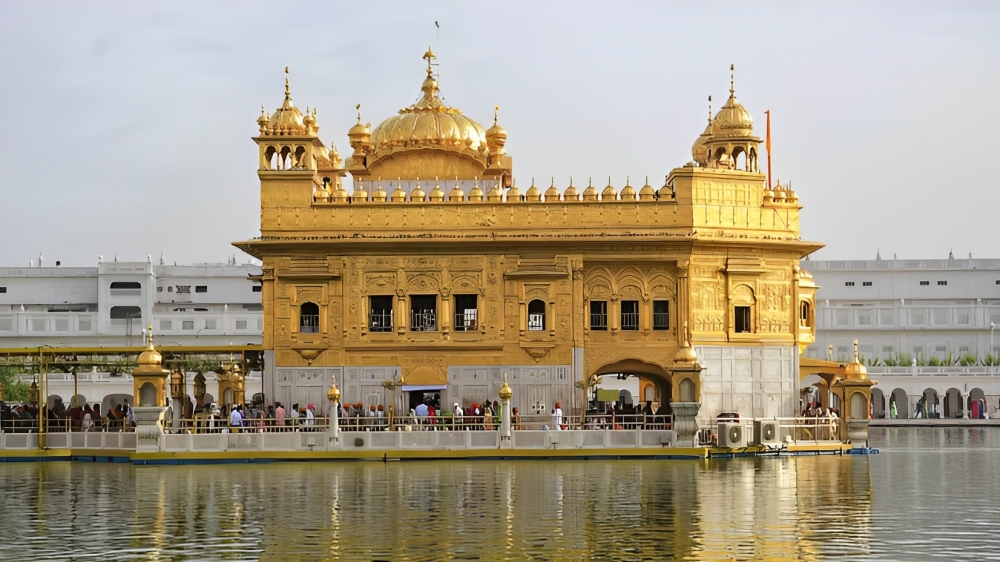Description

Copyright infringement not intended
Context: The Punjab Assembly on Tuesday amended the Sikh Gurdwaras Act, 1925 to free the broadcast of Gurbani from Sri Harmandir Sahib from the alleged monopoly of PTC, a television channel linked to the family of Shiromani Akali Dal (SAD)
Details
- The Bill inserts Section 125A in the Raj-era Act, under which “it shall be the duty” of the Shiromani Gurdwara Parbandhak Committee (SGPC) to “propagate the teachings of the Gurus by making uninterrupted (without any on-screen running advertisements or commercials or distortion) live feed (audio or audio as well as video) of holy Gurbani…available free of cost to all media houses, outlets, platforms, channels, etc, whoever wishes to broadcast anywhere all over the world”.
Criticism
- The decision announced by the Chief Minister of Punjab after the state Cabinet cleared the Bill was criticized by the SAD as “unconstitutional” and “direct interference in the religious affairs of Sikhs”.
- Opposition parties in Punjab said the Punjab Assembly is not competent to amend the Gurdwaras Act, especially without the concurrence of the SGPC.
Punjab Government arguments
- The Chief Minister of Punjab argued that in upholding the law made by Haryana in 2014 to take Gurdwaras in that state outside the purview of the Sikh Gurdwaras Act, 1925, the Supreme Court had ruled that the Gurdwaras Act is a state law.
What is the Sikh Gurdwaras Act, of 1925 and why was it enacted?
- The Sikh Gurdwaras Act 1925 was passed by the Punjab legislative council in British India to resolve a dispute over the management of Sikh gurdwaras. The law legally defined Sikh identity and brought Sikh gurdwaras under the control of an elected body of orthodox Sikhs.
- The law was enacted as a result of the Gurdwara Reform Movement or Akali Movement that started in 1920. The movement aimed to liberate gurdwaras from the control of Udasi mahants (religious heads) who were accused of corruption and deviation from Sikh principles.
- The Udasis were a sect of Sikhism that followed a syncretic form of Hinduism and Sikhism. They had inherited many gurdwaras from their ancestors who had been appointed by Mughal emperors or Sikh rulers.
- The movement culminated in 1925 when the British government agreed to pass a law that would transfer the authority over gurdwaras to an elected body of Sikhs. The law also defined a Sikh as "any person who professes the Sikh religion" and "believes in Guru Granth Sahib" and "the ten Gurus only".
- The law also established a system of committees at local, district and provincial levels to manage gurdwaras and their properties.
What are the implications of the amendment passed by the Punjab Assembly?
- The amendment passed by Punjab Assembly aims to end what it calls "the monopoly" of PTC channel over broadcasting Gurbani from Sri Harmandir Sahib or Golden Temple, which is considered the holiest shrine for Sikhs.
- PTC has been broadcasting Gurbani from Golden Temple since 2006. However, many Sikhs have raised objections over PTC's exclusive rights to broadcast Gurbani and its alleged commercialisation of sacred hymns. They have also accused PTC of censoring or editing Gurbani according to its political interests.
- The amendment seeks to make it mandatory for SGPC to provide a free and uninterrupted live feed of Gurbani to any media platform that wishes to broadcast it anywhere in the world. It prohibits any advertisements or distortions in the broadcast of Gurbani.
- The amendment claims to uphold the spirit of the Sikh Gurdwaras Act 1925 which states that SGPC's duty is to propagate the teachings of the Gurus.
https://indianexpress.com/article/explained/explained-politics/broadcast-of-sacred-gurbani-the-change-in-the-law-and-the-controversy-8675604/















